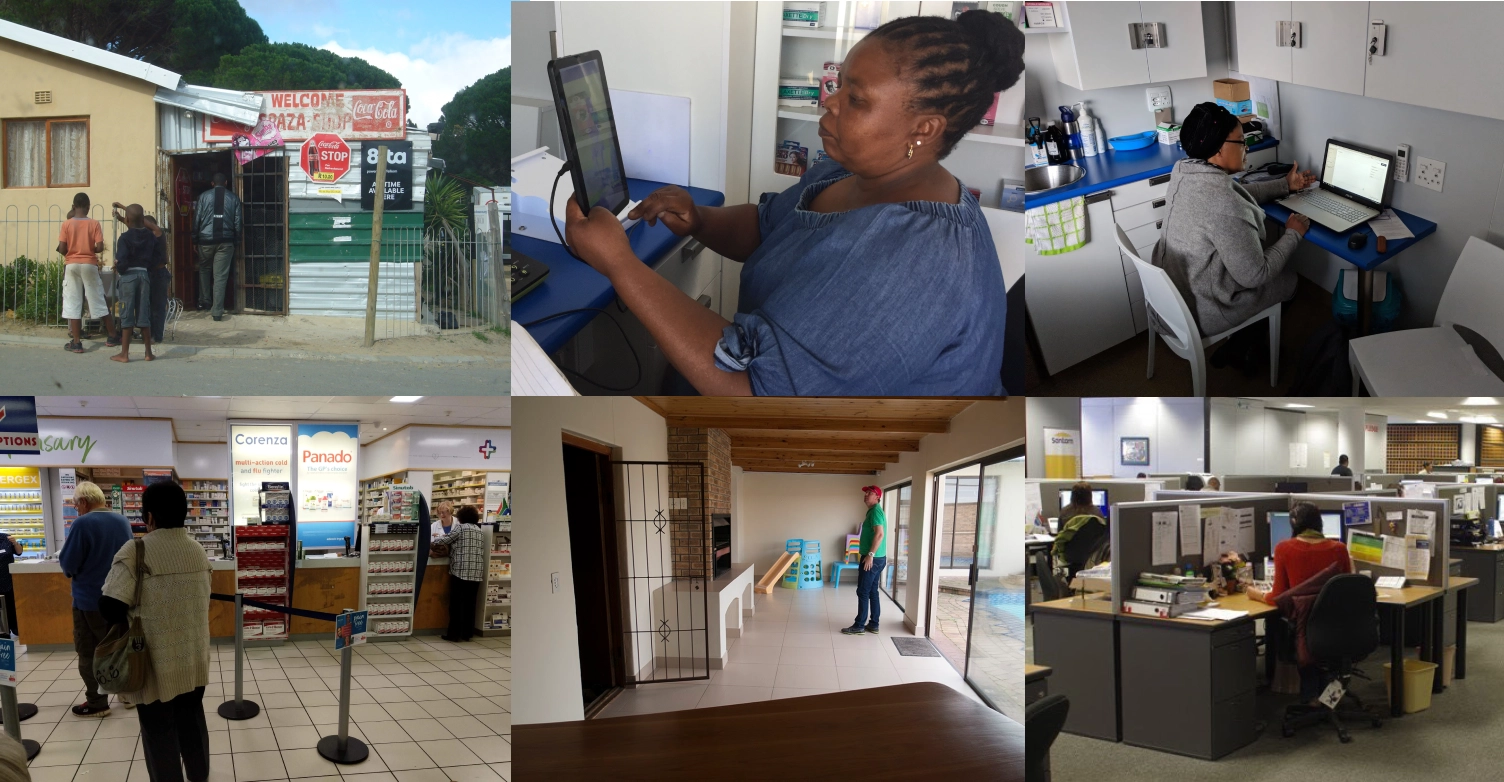Contextual visits
Contextual visits involve researchers going out to customers and chatting with them in a real setting. They are probably the most data-rich customer research sessions available. There is nothing closer to observing a real customer experience.
Contextual visits are best when
- The context affects a customer’s experience. For example, a nurse using technology in a busy emergency room.
- Multiple people interact with each other. For example, call centre staff work together on a support call.
- If the location is the focal point and not the specific types of customers. For example, how different people keep busy at a bus stop.
- You want team members to experience what your customers experience. For example, getting team members to do mystery shops, visit bank branches or spaza shops
Examples of past contextual visits
Mystery shopper at clinics. Going to see what the experience is like for patients entering, waiting, and consulting at different government and private clinics.
Insurance broker walk-in centres. Visiting different walk-in centres across South Africa to learn from the brokers about what works and what doesn’t in their local context.
Learning how merchants take payments. Chatting with different small shops and market stall owners about how they collect different forms of payment.
How people buy homes, ride along. We joined families on Sunday mornings to view showhouses to learn what makes a great home.
Got questions or want to book?
How it usually works
Statement of focus
We start with a kick-off session with you to determine what the objective of the research is. We call this the statement of focus. It’s usually in the form of a question or two, and it’s not something that we can ask customers directly.
For example: “What can the hospital do to help the nurses with their ward visits?” or “Do customers understand how to use the new queuing system?”
Find locations and recruit respondents
Based on the statement of focus, we plan where the best locations are for the research as well as who we will chat with at each location.
If the locations are specific, recruiting from a provided list will be easier, but we are also able to recruit participants ourselves with an extensive network of recruiters across Africa.
We manage all POPIA and GDPA requirements and capture consent.
Observation and discussion guide
Based on what needs to be covered in the statement of focus, we will formulate the best way to gather the findings. Knowing what to look for, what types of questions to ask, and when to ask them comes from familiarity with research theory and years of experience.
We will share this with you before the test to get your input.
Site visits
The visits themselves will depend on the location, statement of focus, and the observation and discussion guides.
Sometimes, a site visit requires us to spend hours observing how people interact with a service terminal or it could be made up of many short visits to spaza shops to buy airtime. One of our favourite techniques is playing the role of an apprentice, where the researcher is taught how to do their job by the respondent like they are an apprentice or intern.
During the site visit, we will record what is suitable and take photos and notes.
Present findings
After extensive analysis of the findings, we present them in a comprehensive report laying out all the themes and insights discovered during the research. If possible, we pair them with photos, and audio clips of some visits, featuring the most impactful themes.

Some of the many contextual visits we have been on